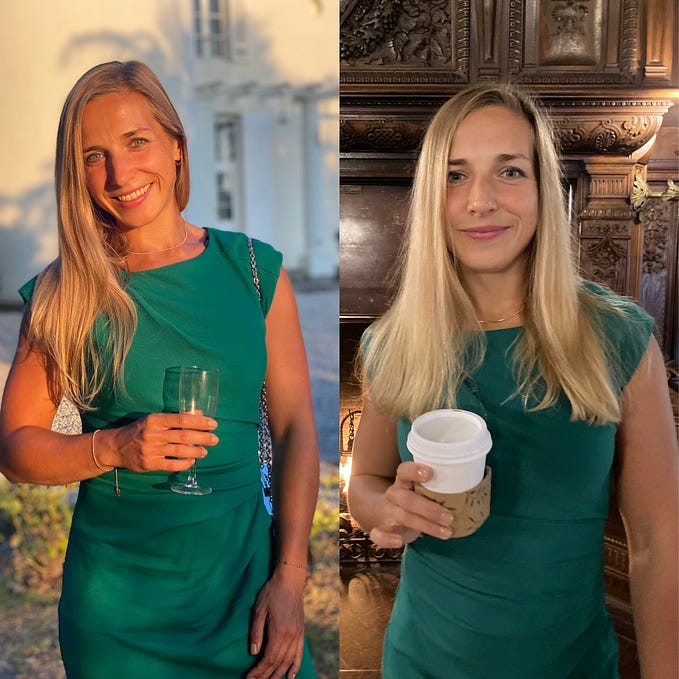
Chevron’s Sana Manjeshwar is helping employees shape their workplace to meet their needs
“We are a pressure release valve for an organization and help employees bring their best self to work every day.”
We all have things we would like to change about our jobs. But most employees (more than 66% according to research) don’t share their concerns with HR or their supervisor. Reasons range from fear of consequences to uncertainty about how to raise issues. So how can problems at work ever be addressed if employees are not comfortable speaking up?
Ask Sana Manjeshwar, head of Chevron’s global ombuds program. As an ombudsperson, or neutral advocate who assists with conflict resolution, Manjeshwar and her team help employees learn how to speak up and advocate for themselves in the workplace. Manjeshwar is also the co-chair of JFF’s recent Worker Voice Initiative series where we explored innovative ways to promote inclusion and empower worker voice.
Chevron, an American multinational energy company with operations in 52 countries and almost 43,000 employees, is one of the largest energy companies in the world. In 1992, Chevron created its corporate ombuds programs — one of the first of its kind in corporate America. It was a novel idea when companies had few formal communication tools for employees to communicate with management.
Today, companies have numerous ways of obtaining employee input like employee engagement surveys, employee resource groups, and communication tools like Slack. So why is an ombuds program still relevant? Simple — with the rising trend in “quick quitting,” today’s employees who experience difficulties at work will not necessarily wait for an annual survey or risk speaking publicly in a group meeting; instead, they just move to the next job.
Manjeshwar understands these dynamics and is reinventing Chevron’s ombuds program to meet the needs of today’s employees. And hundreds of Chevron’s employees are embracing the opportunity.
JFF’s Carey O’Connor, senior strategist, recently spoke with Manjeshwar about Chevron’s ombuds program and how she is helping employees learn how to shape their workplace to meet their needs.
You have an incredibly global background. Tell me about your childhood and how it prepared you to be such a strong employee advocate.
I am a third-culture kid who doesn’t really fit into just one place.
I was born in London to parents who were first-generation immigrants from Pakistan with Indian, Irani, Kazakhstani, and Uzbekistani heritage. When I was 6, we moved to Lagos, Nigeria, where I attended an international school that was a beautiful, inclusive bubble. At our lunch breaks, we would share our packed lunches, exchanging sushi, zaatar bread, kebabs, hot dogs, and challah bread while speaking multiple languages.
I moved back to London when I was 10 to attend an all-girls boarding school while my parents finished their expat assignment in Lagos. I was only 10, and it was very hard at the time to leave home and live on my own. But I now appreciate how the experience helped me build confidence in myself and my beliefs. When I was 13, we moved to Mumbai, where I lived through the 1992 Mumbai Riots which cemented my desire to be a lawyer and help those who could not advocate for themselves. I later earned a psychology degree from McGill University in Canada and a law degree from Fordham Law School in the United States. I practiced employment law for several years, which led to my calling to become an ombuds.
Experiencing so many different cultures at each crucial stage in my development opened my mindset to a different way of thinking about the world.
What exactly is an ombuds?
An ombuds is a person who provides a safe space for no-consequence conversations at work. They are neutral, independent, and confidential — conversations are always off the record. In addition to listening, an ombuds helps employees brainstorm solutions to their work-related concerns and coaches them on next steps.
Members of an ombuds team help employees address a variety of concerns like conflicts with a work colleague, how to give and receive multidirectional feedback from a colleague or manager, feeling overwhelmed by workload, and experiencing exclusion at work. We help employees experiencing difficulties at work move from fight or flight to constructive problem-solving.
An ombuds sounds like an employee hotline. How are they different?
While an ombuds program and an employee hotline are both channels for employees to surface problems and conflicts at work, they are completely different services.
Company hotlines are a formal channel designed to help anyone anonymously report concerns about misconduct, ethics, and fraud. Once a report has been made, an investigation is conducted to determine whether misconduct can be substantiated and whether corrective actions are appropriate. The matter is then closed.
An ombuds program is an informal, neutral, and confidential service with experienced conflict resolution advisors with deep knowledge of the company’s policies and processes. Ombuds work directly with employees to explore solutions to their problems and, sometimes, empower them to surface their concerns through more formal channels like the hotline.
Chevron’s hotline and ombuds program sometimes work in tandem. When issues are reported to Chevron’s employee hotline, the case handler sometimes refers the reporter to the ombuds team for continued support. If the reporter agrees, the ombuds team can work directly with the reporter while the hotline team handles the formal investigation. This type of partnership can work well when addressing concerns about performance challenges, building a feedback culture, team building, and barriers to the employee experience.
An ombuds team helps empower a rich and inclusive culture, where employees can be less conflict-averse and address barriers to any work-related concern. We are a pressure release valve for an organization and help employees bring their best self to work every day.
Can you give us an example of a client your team worked with (de-identified for confidentiality)?
Early in the pandemic, we had a new mother contact us. She had recently had a baby and was still relatively new to the company. She was really struggling with her responsibilities at work and at home and didn’t feel comfortable speaking with her new supervisor. Being remote and new to the team, she didn’t feel like she could ask her supervisor for support. She called us as a last resort and told us that she didn’t see any options other than quitting her job.
We worked with her to brainstorm on other solutions like work prioritization, role-played speaking to her supervisor about her concern, and discussed talking to HR, exploring our expansive work-life services and employee assistance program for psychological support, and taking a leave of absence. We helped her create and practice the language she ultimately used to speak with her supervisor about her struggles and how to prioritize her workload. Role-playing the conversation helped her have the confidence to ask her supervisor for help. Her supervisor was able to help her through that rough patch, and she is still with Chevron and is thriving in her career.
How can employees feel sure that you have the knowledge and organizational power they need to make change happen?
All of our ombuds have extensive training in Human Resources programs and benefits and have leadership experience. We are also trained in mediation and conducting crucial conversations.
The program was established to ensure we have the right level of influence and independence. I have access to the CEO and other executives and senior leaders, enabling me to reach the highest leaders in our company, when necessary. Additionally, the ombuds program is an administratively separate group — we are considered independent from Human Resources, Legal, and Diversity and Inclusion.
How do you know the ombuds program is working? What does success look like?
For us, success is a combination of usage, presence, trends, and effectiveness. Currently, 3% to 4% of our employee population uses our ombuds program which is the benchmark of an effective ombuds program by the International Ombudsman Association. Of the 3% to 4%, about half are outside the United States, which is an improvement from when I started. We are already seeing increased usage of our service outside the United States as we continue to provide awareness of our services to our international employees.
Measuring the presence of the program is difficult, but it presents the biggest opportunity for change at scale. Our goal is to be an indispensable advisor to our company leaders when they are making key decisions that impact employees, trying to figure out how to communicate and implement a workplace change, empowering a rich feedback culture, or working to resolve a workplace conflict.
We also monitor our effectiveness by keeping track of the percentage of visitors who have been able to resolve their matter informally or who were able to surface their concerns through a formal channel. We provide high-level aggregated, anonymous feedback to business leaders on issues of concern to their employees.
Let’s talk more about your role as an advisor to company leaders on key decisions impacting employees.
Ombuds cannot and will not share identifiable information about the employees who contact us. But we have a unique opportunity to see trends as they emerge and feel it is important to share that information in a way that maintains anonymity yet raises awareness of any concerns.
Over time, my team and I built credibility with management regarding our ability to understand and share employee voice on workplace issues. We are regularly invited to participate on internal committees where organizational changes are being discussed so we can share employee voice and leaders ask for our counsel on how decisions will be perceived.
Can you give me an example of how that works?
When Chevron was crafting its return-to-work policy after COVID, my team and I regularly provided management information on employee sentiment, which was constantly changing. Because we spoke with employees every day, we were in touch with what they were thinking and feeling and struggling with. The information we provided positively impacted the final policy and the distribution communications.
What is the hardest part of your job?
Whenever I see injustice, I want to advocate for those who cannot speak for themselves. But being an ombuds is not about advocating for someone. It is about being aware of your own biases, and neutrally helping them advocate for themselves. My job is to help employees think of solutions to their issue and to help them develop the skills they need to solve their own problems. It is hard for me to turn off my instinct to fight on their behalf, to remove myself emotionally from their situation. But what is more effective in the long run: advocating for one person or teaching an army of people to advocate for themselves?
What advice can you give to someone who is looking to start an ombuds program at their company?
The initial sell for starting an ombuds program is not easy; some people may perceive the idea as an additional compliance program. It is important to understand what an ombuds program is and is not. I recommend spending time researching ombuds programs via the International Ombuds Association. You will need to build a case that an ombuds program is not about compliance, but about building an inclusive “speak up” culture that values all perspectives, helps leaders identify their blind spots beyond employee survey data, and demonstrates a strong commitment to employees that they deserve the best employee experience.
The Changemakers series is produced as part of JFF’s Corporate Action Platform, which features stories of Impact Employers. Visit JFF.org for more information about Impact Employers. This interview was condensed and edited for clarity.









